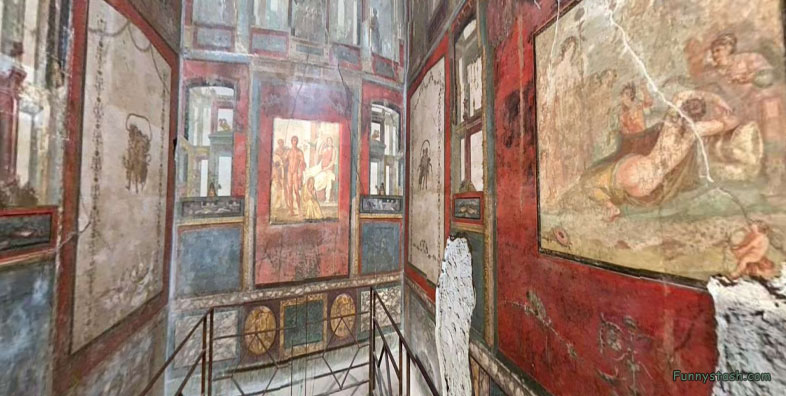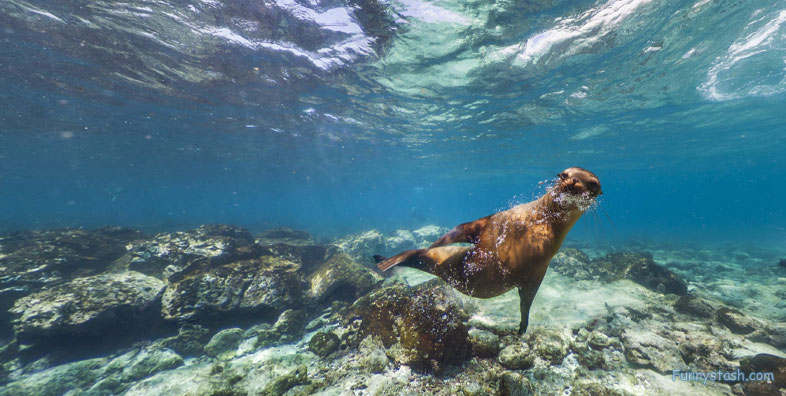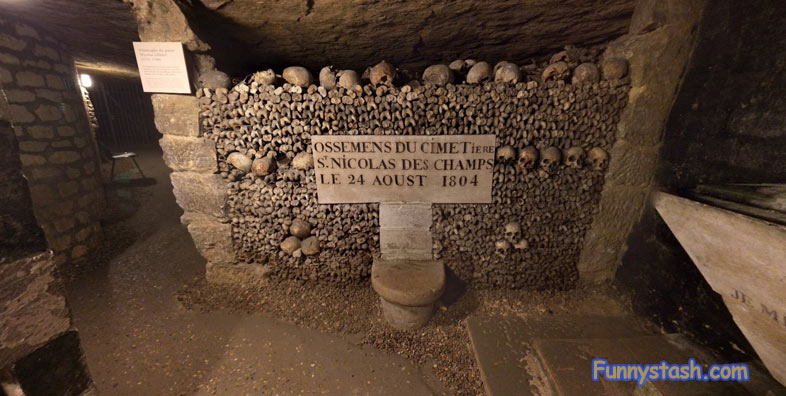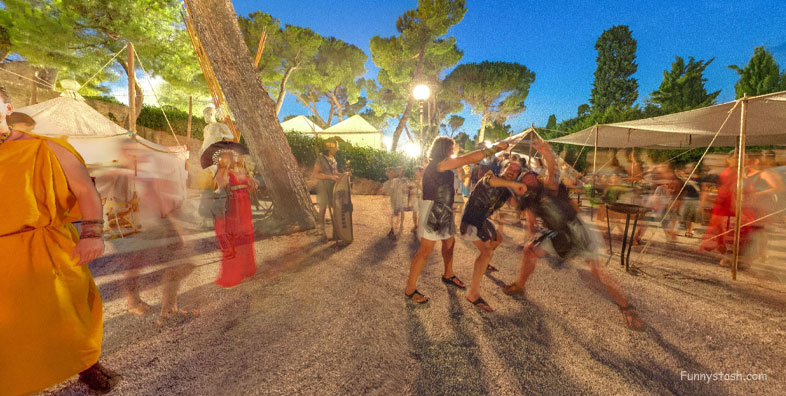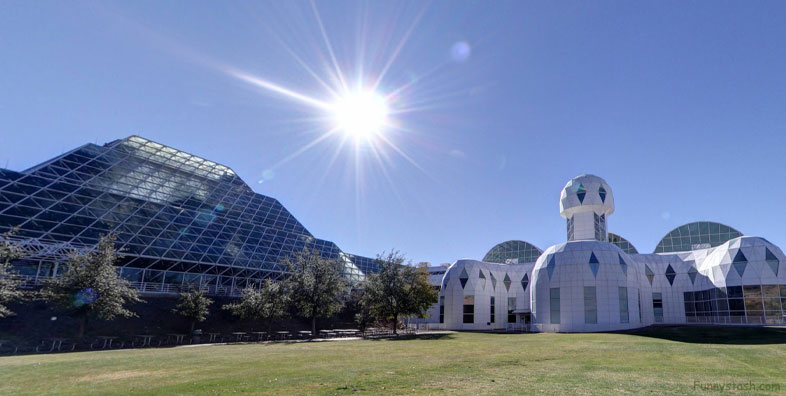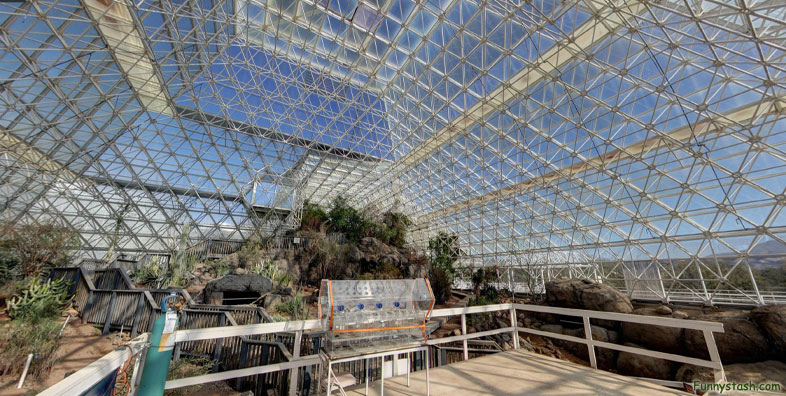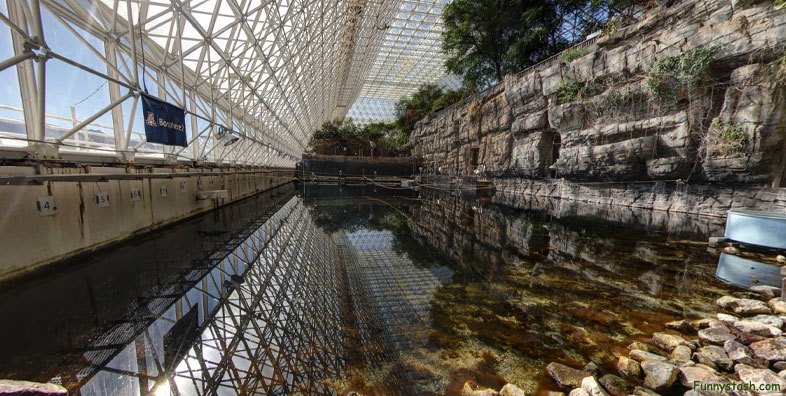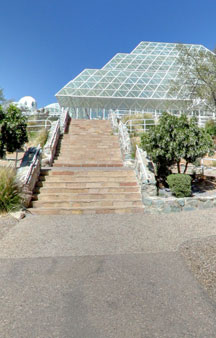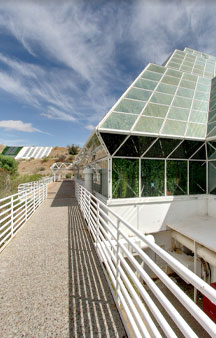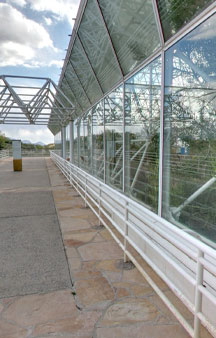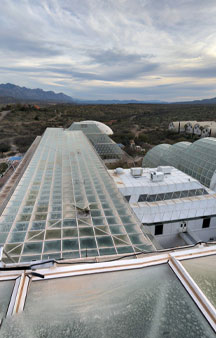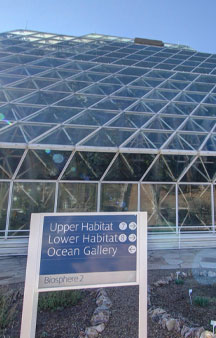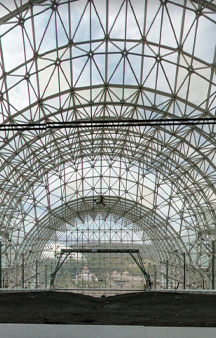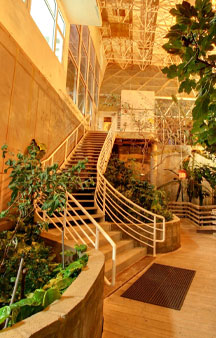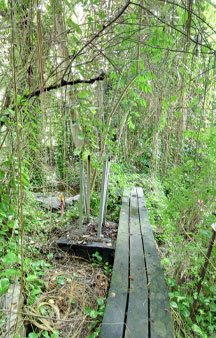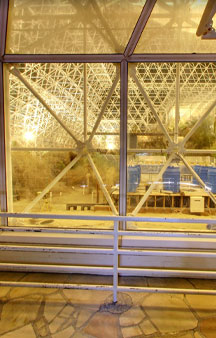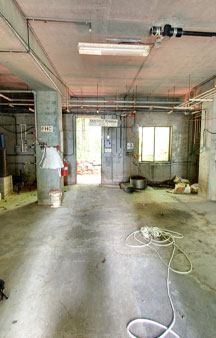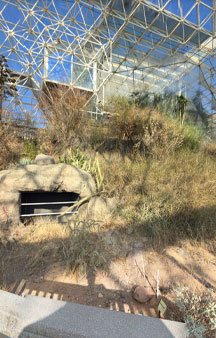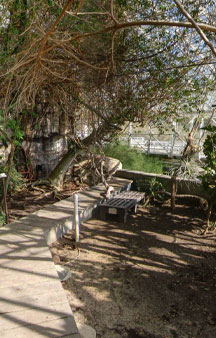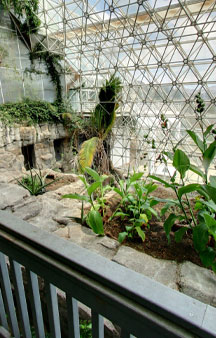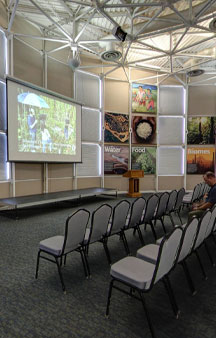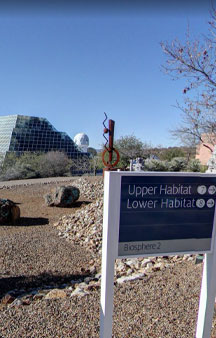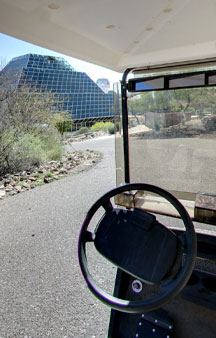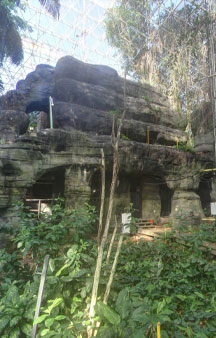Gps Coordinates / 32.5793261,-110.8509029
Biosphere 2 VR Tours
32540 S Biosphere Rd, Tucson, AZ 85739, USA
Link Location Direction Gps -110.8505735
Gps Coordinates / 32.5784729,-110.8505735
is an American Earth system science research facility located in Oracle, Arizona. Its mission is to serve as a centre for research, outreach, teaching, and lifelong learning about Earth, its living systems, and its place in the universe. It is a 3.14-acre (1.27-hectare) structure originally built to be an artificial, materially closed ecological system, or vivarium. It remains the largest closed system ever created.
Link Location Area Gps -110.850525
Gps Coordinates / 32.5787058,-110.850525
Constructed between 1987 and 1991, Biosphere 2 was originally meant to demonstrate the viability of closed ecological systems to support and maintain human life in outer space as a substitute for Earth's biosphere. It was designed to explore the web of interactions within life systems in a structure with different areas based on various biological biomes. In addition to the several biomes and living quarters for people, there was an agricultural area and work space to study the interactions between humans, farming, technology and the rest of nature as a new kind of laboratory for the study of the global ecology. Its mission was a two-year closure experiment with a crew of eight humans ("biospherians"). Long-term it was seen as a precursor to gain knowledge about the use of closed biospheres in space colonization. As an experimental ecological facility it allowed the study and manipulation of a mini biospheric system without harming Earth's biosphere.
Gps Link -110.8510396 / Gps Link -110.850776 / Gps Link -110.8508733
Gps Coordinates / 32.5777325,-110.8510396 / 32.5792905,-110.850776 / 32.5780299,-110.8508733
Its seven biome areas were a 1,900-square-meter (20,000 sq ft) rainforest, an 850-square-meter (9,100 sq ft) ocean with a coral reef, a 450-square-meter (4,800 sq ft) mangrove wetlands, a 1,300-square-metre (14,000 sq ft) savannah grassland, a 1,400-square-meter (15,000 sq ft) fog desert, and two anthropogenic biomes: a 2,500-square-meter (27,000 sq ft) agricultural system and a human habitat with living spaces, laboratories and workshops. Below ground was an extensive part of the technical infrastructure. Heating and cooling water circulated through independent piping systems and passive solar input through the glass space frame panels covering most of the facility, and electrical power was supplied into Biosphere 2 from an onsite natural gas energy centre.
Gps Link -110.8504461 / Gps Link -110.8502076 / Gps Link -110.8512528
Gps Coordinates / 32.5791288,-110.8504461 / 32.5794645,-110.8502076 / @32.5792003,-110.8512528
Biosphere 2 was only used twice for its original intended purposes as a closed-system experiment: once from 1991 to 1993, and the second time from March to September 1994. Both attempts, though heavily publicized, ran into problems including low amounts of food and oxygen, die-offs of many animals and plants included in the experiment (though this was anticipated since the project used a strategy of deliberately "species-packing" anticipating losses as the biomes developed), group dynamic tensions among the resident crew, outside politics and a power struggle over management and direction of the project. Nevertheless, the closure experiments set world records in closed ecological systems, agricultural production, health improvements with the high nutrient and low caloric diet the crew followed, and insights into the self-organization of complex biomic systems and atmospheric dynamics.[6] The second closure experiment achieved total food sufficiency and did not require injection of oxygen.
Gps Link -110.8517079 / Gps Link -110.8513132 / Gps Link -110.8509813
Gps Coordinates / 32.5789845,-110.8517079 / 32.5784328,-110.8513132 / 32.5778614,-110.8509813
In June 1994, during the middle of the second experiment, the managing company, Space Biosphere Ventures, was dissolved, and the facility was left in limbo. Columbia University assumed management of the facility in 1995 and used it to run experiments until 2003. It then appeared to be in danger of being demolished to make way for housing and retail stores, but was taken over for research by the University of Arizona in 2007. The University of Arizona took full ownership of the structure in 2011.
Gps Link -110.8512337 / Gps Link -110.8509728 / Gps Link -110.850536
Gps Coordinates / 32.5784229,-110.8512337 / 32.5782381,-110.8509728 / 32.5785813,-110.850536
The Biosphere 2 project was launched in 1984 by businessman and philanthropist Ed Bass and systems ecologist John P. Allen, with Bass providing US$150 million in funding until 1991. Bass and Allen had met in the 1970s at the Synergia Ranch, a counterculture community led by Allen, who advocated Buckminster Fuller's "Spaceship Earth" concept and explored the idea of biospheres as a refuge from disasters such as nuclear war. Several other former members of Synergia Ranch also joined the Biosphere 2 project.
Gps Link -110.8505228 / Gps Link -110.8503647 / Gps Link -110.850012
Gps Coordinates / 32.5788,-110.8505228 / 32.5791605,-110.8503647 / 32.5795854,-110.850012
Construction was carried out between 1987 and 1991 by Space Biosphere Ventures, a joint venture whose principal officers were John P. Allen, inventor and executive chairman; Margaret Augustine, CEO; Marie Harding, vice-president of finance; Abigail Alling, vice president of research; Mark Nelson, director of space and environmental applications, William F. Dempster, director of system engineering, and Norberto Alvarez-Romo, vice president of mission control.
Gps Link -110.8480345 / Gps Link -110.8504427
Gps Coordinates / 32.5798717,-110.8480345 / 32.5789332,-110.8504427
It was named "Biosphere 2" because it was meant to be the second fully self-sufficient biosphere, after the Earth itself ("Biosphere 1").



